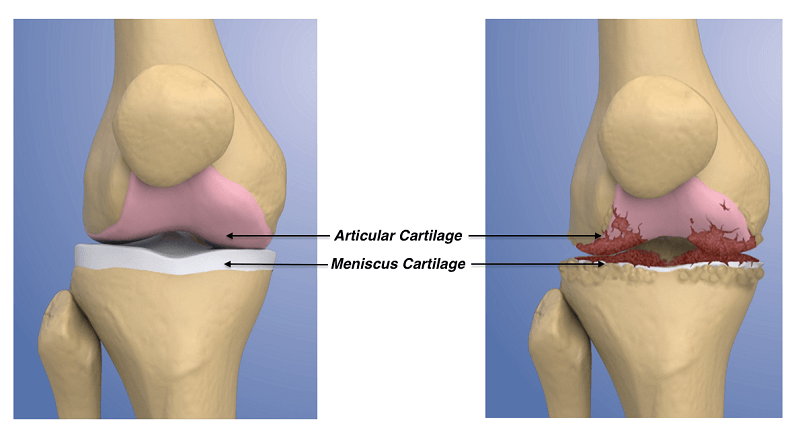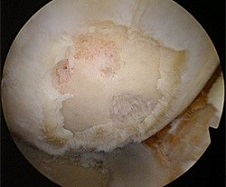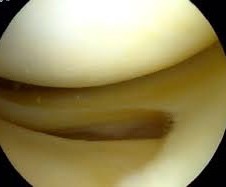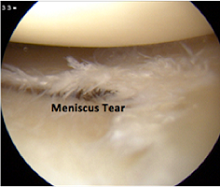WHAT GETS DAMAGED IN OSTEOARTHRITIS?

Degenerative joint disease occurs when permanent damage occurs in cartilage that protects joint surfaces. Cartilage is thick, soft, smooth body tissue. Articular cartilage lines the bones in joints. The knee has additional meniscus cartilage that sits between the bones for added cushioning and stability.
Degenerative joint disease occurs because of a “wear and tear” process that breaks down cartilage. This damage accumulates over time from injuries, overuse, and poor healing and maintenance because of the aging process. The cartilage develops tears, frayed ends, thinning, fissures, and rough surfaces that become less able to support and protect the joint. Tissue loss accumulates that can cause the joint space to decrease until there is “bone on bone” joint collapse.
Even though degenerative disease causes cartilage damage, there may not be pain in the joint. However, stress builds up easily because of a lack of protection. When there is enough irritation in the degenerative joint, painful inflammation occurs, and this what is known as osteoarthritis. Besides dull or sharp pain, osteoarthritis also causes joint swelling, stiffness, and instability.

Here is an image of intact cartilage in a knee joint (left). In osteoarthritis, the cartilage is severely damaged, with tearing, frayed ends, fissures, and lost tissue (right).



Interior of the knee joint, seen during surgery
Arthroscopic look (camera view) of the inside of the knee joint, showing cartilage damage.
Other Topics That Interest You


